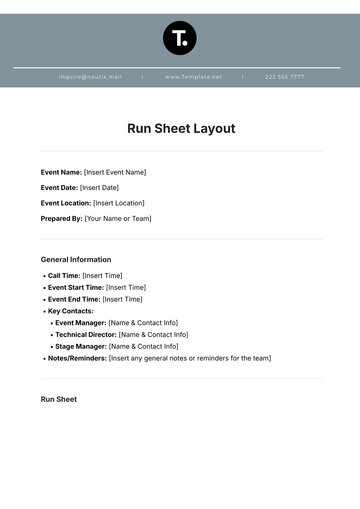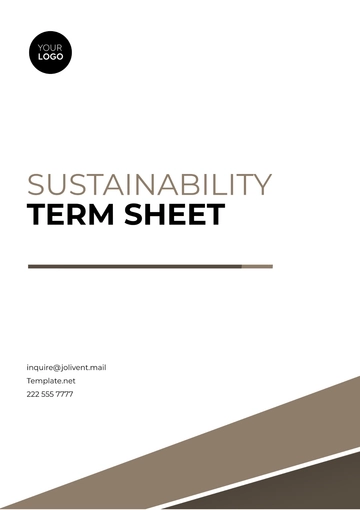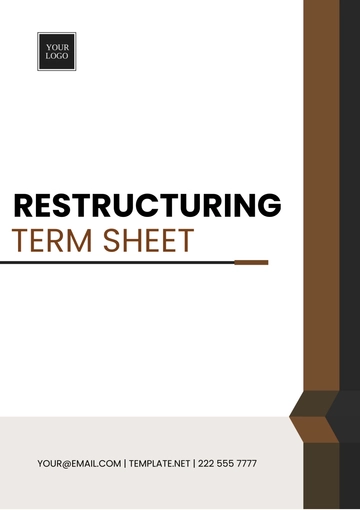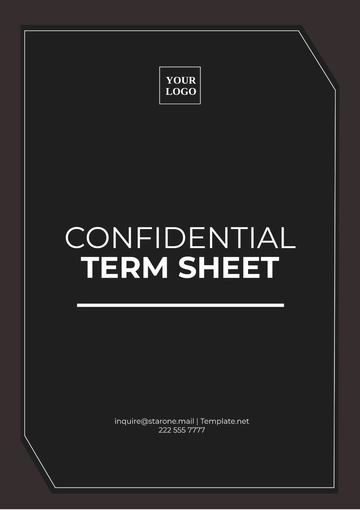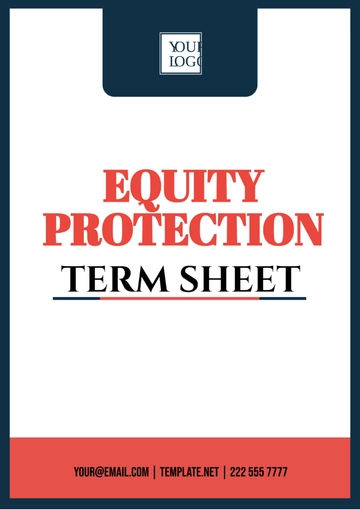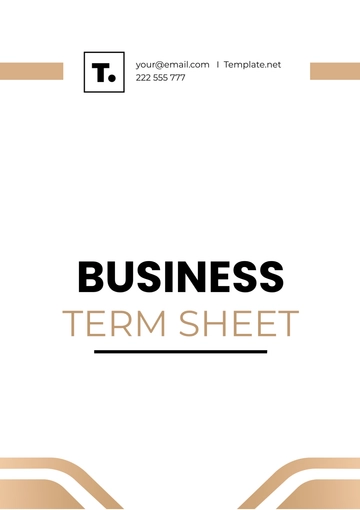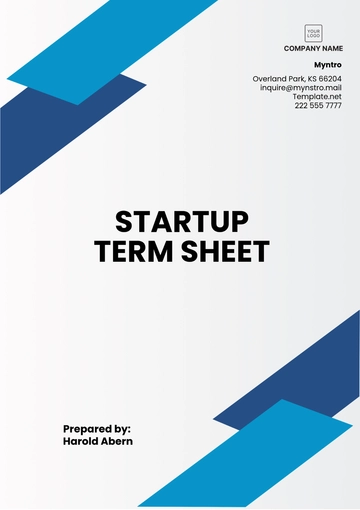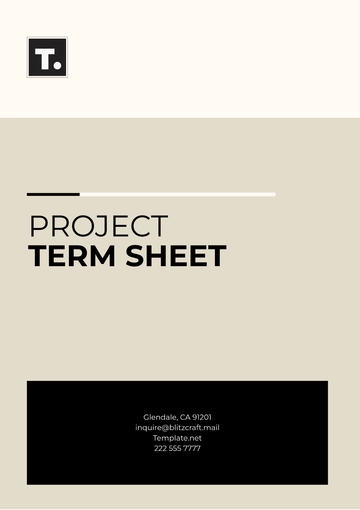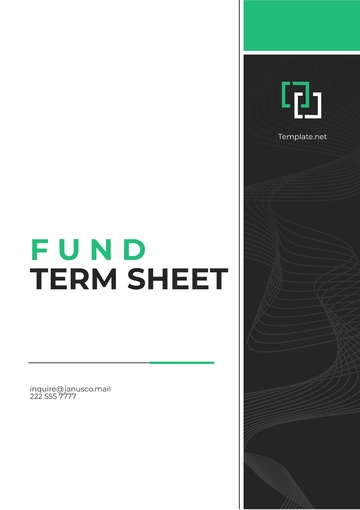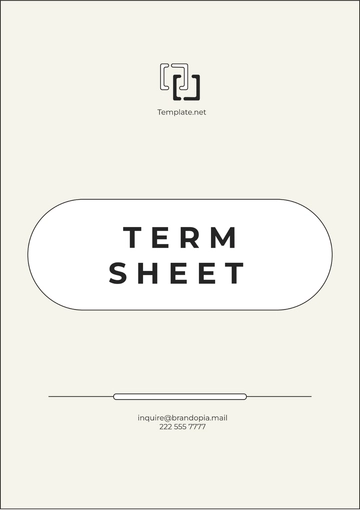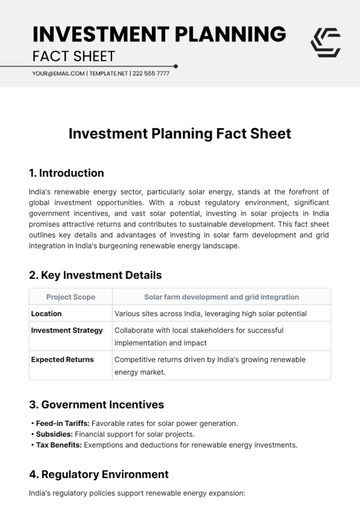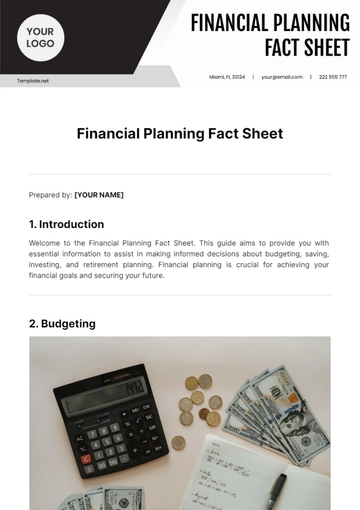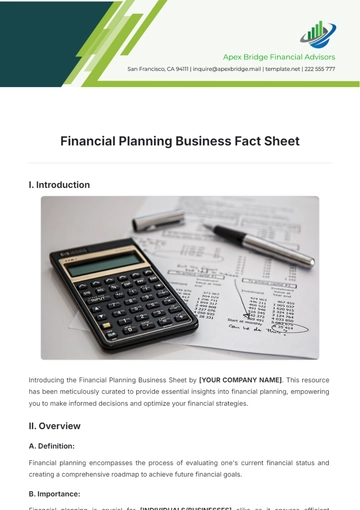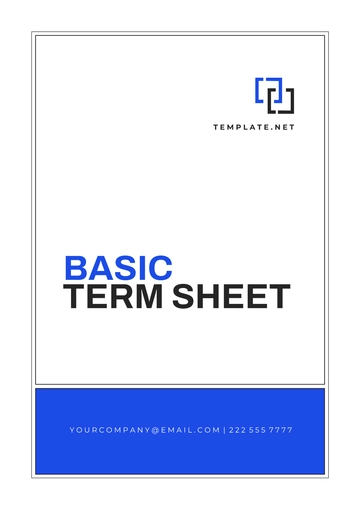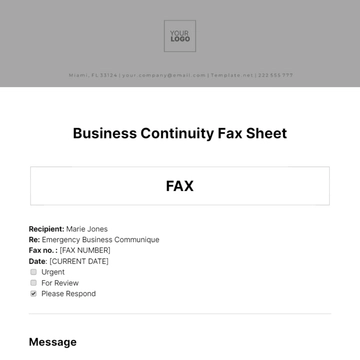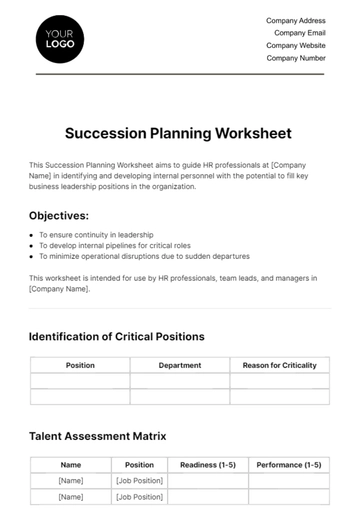Free Financial Planning Fact Sheet
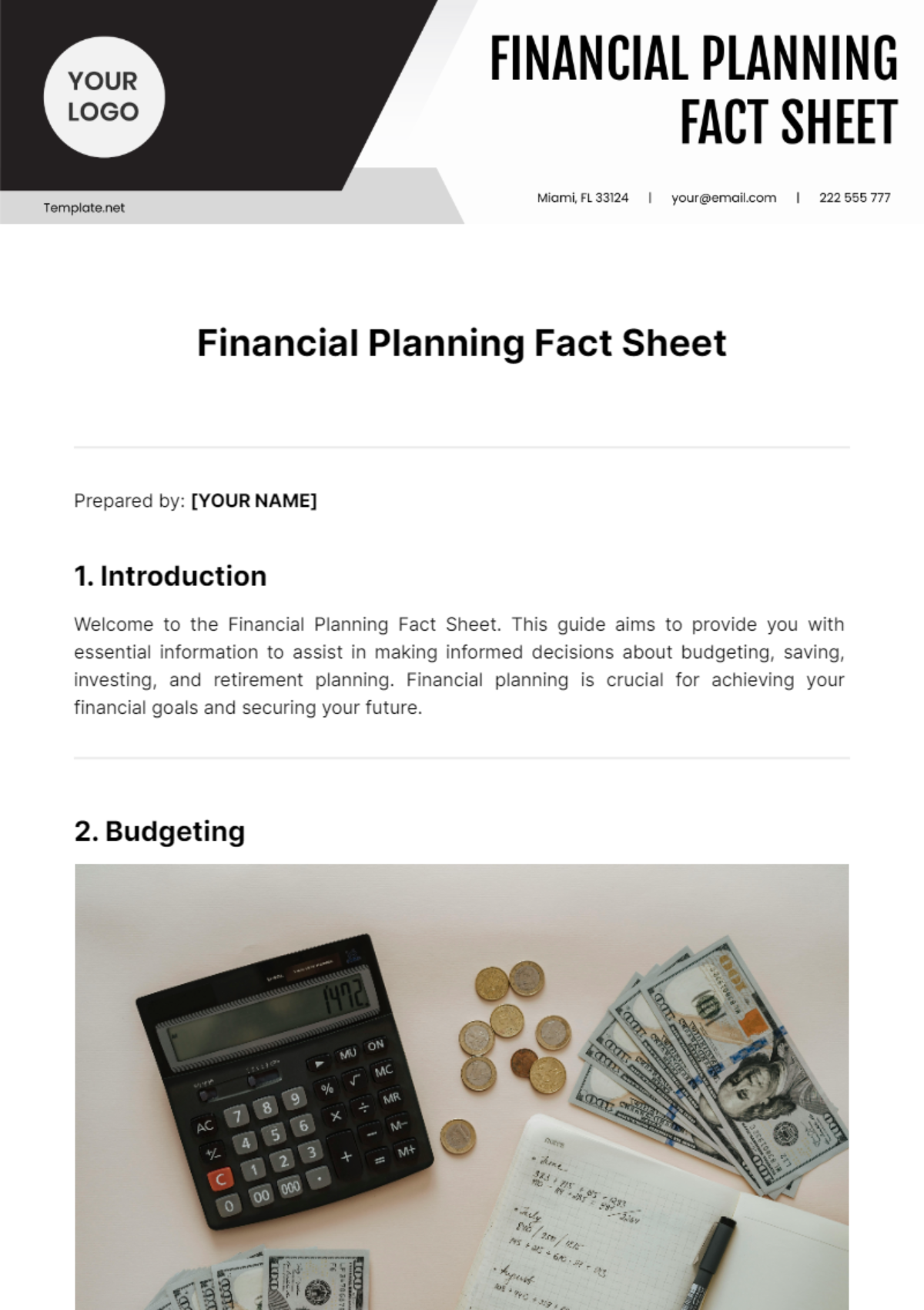
Prepared by: [YOUR NAME]
1. Introduction
Welcome to the Financial Planning Fact Sheet. This guide aims to provide you with essential information to assist in making informed decisions about budgeting, saving, investing, and retirement planning. Financial planning is crucial for achieving your financial goals and securing your future.
2. Budgeting

Step | Description |
|---|---|
Assess Income | Calculate your monthly income from all sources. |
Track Expenses | Monitor and categorize your monthly spending. |
Set Budget Goals | Allocate funds for essentials, savings, and discretionary expenses. |
Review and Adjust | Regularly review your budget and adjust as needed. |
3. Saving

Type of Savings | Description |
|---|---|
Emergency Fund | Save 3-6 months' worth of living expenses in a liquid account. |
Short-Term Goals | Allocate funds for upcoming expenses like vacations or major purchases. |
Retirement Savings | Contribute to retirement accounts like 401(k), IRA, or pension plans. |
Long-Term Investments | Consider investments such as stocks, bonds, or real estate for wealth accumulation. |
4. Investing

Investment Basics | Description |
|---|---|
Risk Tolerance | Understand your comfort level with investment risk. |
Asset Allocation | Diversify investments across different asset classes (stocks, bonds, etc.). |
Investment Horizon | Determine how long you plan to invest before needing funds. |
Investment Options | Explore mutual funds, ETFs, individual stocks, and other investment vehicles. |
5. Retirement Planning

Retirement Considerations | Description |
|---|---|
Retirement Goals | Define your desired lifestyle and financial needs post-retirement. |
Retirement Accounts | Maximize contributions to tax-advantaged retirement accounts. |
Social Security | Understand how Social Security benefits factor into retirement income. |
Health Care Costs | Plan for medical expenses during retirement. |
6. Frequently Asked Questions
Q1. How much should I be saving for retirement? |
|
Q2. How can I start building an emergency fund? |
|
Q3. What is the difference between stocks and bonds? |
|
7. Additional Tips
Debt Management: Prioritize paying off high-interest debts to free up funds for savings and investments.
Financial Advisor: Consider consulting a certified financial planner for personalized advice.
Regular Review: Periodically reassess your financial plan based on changing circumstances.
8. Conclusion
Effective financial planning is key to achieving financial security and meeting your life goals. By following the steps outlined in this fact sheet and staying disciplined, you can build a solid financial foundation for the future. Remember, it's never too early or too late to start planning for your financial well-being.
- 100% Customizable, free editor
- Access 1 Million+ Templates, photo’s & graphics
- Download or share as a template
- Click and replace photos, graphics, text, backgrounds
- Resize, crop, AI write & more
- Access advanced editor
Explore the Financial Planning Fact Sheet Template on Template.net, your go-to solution for effective financial strategies. This editable and customizable template simplifies financial planning processes, allowing you to tailor content to specific needs. Compatible with our Ai Editor Tool, personalize your fact sheets effortlessly. Streamline your financial documentation with this user-friendly template, ensuring comprehensive and personalized financial planning with ease.
You may also like
- Attendance Sheet
- Work Sheet
- Sheet Cost
- Expense Sheet
- Tracker Sheet
- Student Sheet
- Tracking Sheet
- Blank Sheet
- Information Sheet
- Sales Sheet
- Record Sheet
- Price Sheet
- Plan Sheet
- Score Sheet
- Estimate Sheet
- Evaluation Sheet
- Checklist Sheet
- Bid Sheet
- Call Log Sheet
- Bill Sheet
- Assessment Sheet
- Task Sheet
- School Sheet
- Work From Home Sheet
- Summary Sheet
- Construction Sheet
- Cover Sheet
- Debt Spreadsheet
- Debt Sheet
- Client Information Sheet
- University Sheet
- Freelancer Sheet
- Bookkeeping Sheet
- Itinerary Spreadsheet
- Scorecard Sheet
- Run Sheet
- Monthly Timesheet
- Event Sheet
- Advertising Agency Sheet
- Missing Numbers Worksheet
- Training Sheet
- Production Sheet
- Mortgage Sheet
- Answer Sheet
- Excel Sheet
